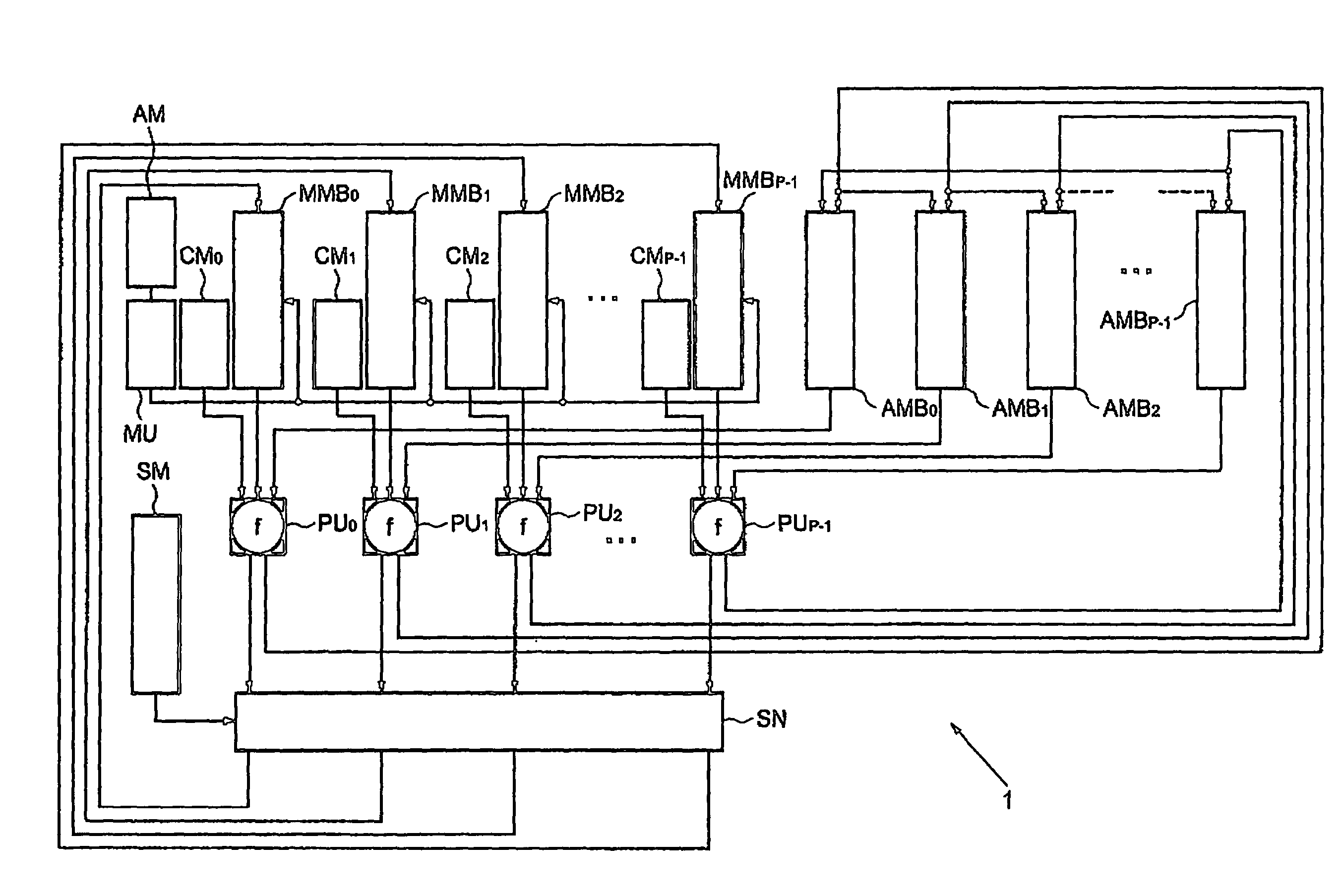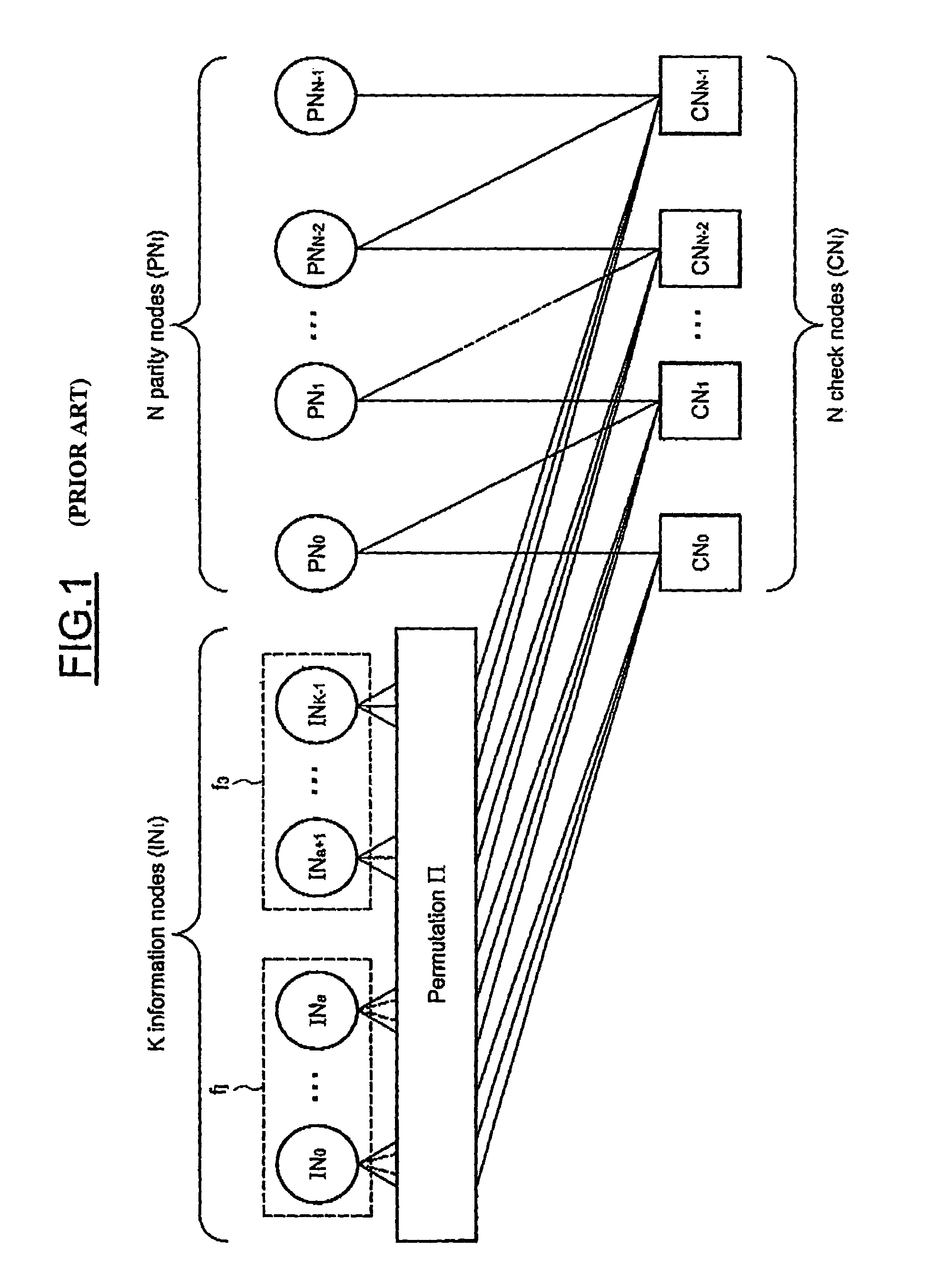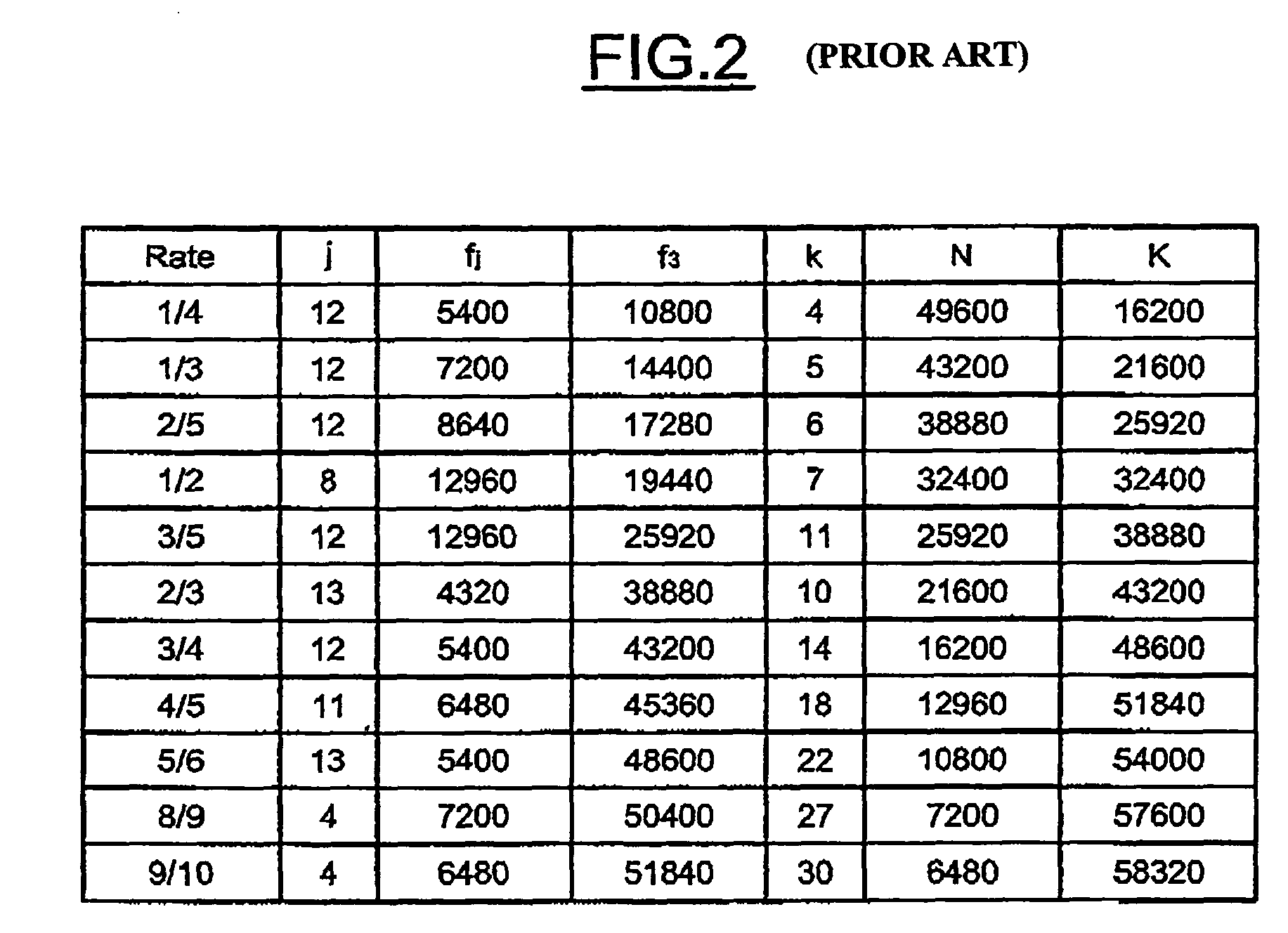LDPC decoder for DVB-S2 decoding
a decoding and dvb technology, applied in the field of data communication, can solve the problems of severe routing congestion, no practical impact, delay and power, etc., and achieve the effect of avoiding read/write conflicts
- Summary
- Abstract
- Description
- Claims
- Application Information
AI Technical Summary
Benefits of technology
Problems solved by technology
Method used
Image
Examples
Embodiment Construction
[0039]In the following description, the LDPC code is a DVB-S2 LDPC code as defined in “ETSI EN 302 307 v1.1.1 (2004-06)” defining the DVB-S2 standard, although the invention is not limited to such a code. The parity check matrix H of LDPC code is a sparse binary matrix. The set of valid codewords x has to satisfy Htx=0.
[0040]A column in H is associated to a bit of the codeword and a row corresponds to a parity check. A nonzero element in a row of H means that the corresponding bit contributes to this parity check. The code can best be described by a bipartite graph called a Tanner graph, which is a graphical representation of the associations between code bits and parity checks. Code bits are shown as variable nodes VNi (circles), and parity checks as check nodes CNi (squares), with edges connecting them. The number of edges on each node is called the node degree. If the node degree is identical, for all variable nodes, the parity check matrix H is called regular, otherwise the pari...
PUM
 Login to View More
Login to View More Abstract
Description
Claims
Application Information
 Login to View More
Login to View More - R&D
- Intellectual Property
- Life Sciences
- Materials
- Tech Scout
- Unparalleled Data Quality
- Higher Quality Content
- 60% Fewer Hallucinations
Browse by: Latest US Patents, China's latest patents, Technical Efficacy Thesaurus, Application Domain, Technology Topic, Popular Technical Reports.
© 2025 PatSnap. All rights reserved.Legal|Privacy policy|Modern Slavery Act Transparency Statement|Sitemap|About US| Contact US: help@patsnap.com



